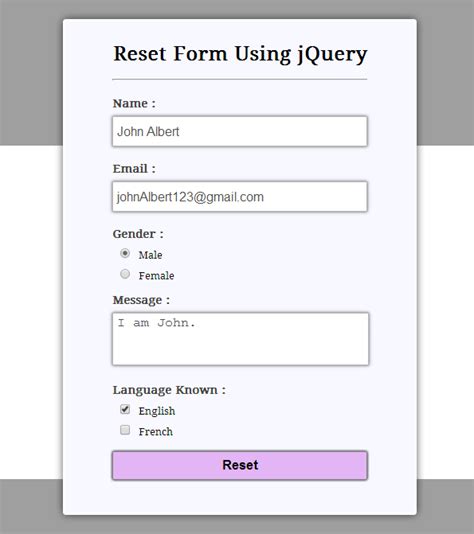Resetting a form with jQuery can be a simple yet powerful way to return a form to its original state, especially after a user has interacted with it, perhaps making mistakes or wanting to start over. Doing this in one line of code is not only efficient but also elegant.
Here's how you can reset a form with jQuery in just one line:
$('form')[0].reset();
Or, if you want to specifically target a form by its ID:
$('#formId')[0].reset();
But what's happening here? Let's break it down:
-
$('form')or$('#formId'): These parts select the form(s) or a specific form by its ID using jQuery. The$symbol is a shorthand for thejQueryobject, which is used to select elements on the webpage. -
[0]: This gets the first element of the jQuery selection. Since jQuery returns a collection of elements, even if you're selecting by ID (which should be unique on a page), you need to tell it you want the actual DOM element, not the jQuery object wrapping it. -
.reset(): This method is a standard JavaScript method that resets a form to its original state, clearing any input values, checkboxes, radio buttons, etc., back to their default values as specified in the HTML.
However, if you're looking for a pure jQuery solution, one that doesn't involve directly accessing the DOM element, you can use the .trigger() method:
$('form').trigger('reset');
Or for a form with a specific ID:
$('#formId').trigger('reset');
This method triggers the reset event on the form, which achieves the same result but stays within the jQuery framework.
It's worth noting that using .trigger('reset') might not be as efficient or straightforward as directly calling the reset() method on the DOM element. However, it's a good alternative if you need to keep your code entirely within jQuery for consistency or other reasons.
Both of these methods are effective for resetting forms and can be used based on the specific needs of your project.
